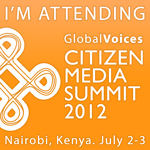What helps people, helps business. -Leo Burnett, American Marketing expert
David Sasaki of Global Voices writes an investigative report on the "Economics of Social Media Conference". He shows how the new media and web 2.0 contents created by millions of individuals and published for free prompted by humans' trait of socialization are helping some entrepreneurs to cash on.
Some interesting observations by David:
Observers have noticed that internet users like to have one central place for their online profile. For the majority of people, that central place is either Facebook or MySpace. For others, like myself, it’s their personal blog. But the point is, we all want a “digital home.” Widgets than give us a way to import our other online activities (our pictures, music, movies, books) onto our main profile page.Really an eye opener.
It’s interesting that the question of ethics never entered the conference discussion. There was no question of whether viral/conversational marketing was acceptable or not, the question was how to measure it and what to pay for it.
This wasn’t a blogger’s conference. This was a place for media insiders, most of whom have taken to the net because it’s been good for their careers. Dozens of times throughout the day I heard the annoying use of ‘eyeballs’ to describe the millions of internet users just like you and me who pay for services like Flickr via subscriptions or pay for services like MySpace by creating content which then attracts advertisers.
Which brings us to an entire other level of questions. Is it OK for sites like YouTube, MySpace, Facebook, and WordPress.com to make lots of money for content that they didn’t produce?
A criticism can also be made of Global Voices. Much of the value of the website comes from the unpaid bloggers we quote and translate and the daily contributions from our volunteer authors. While we’ve been wanting to pay those contributing authors for some time now, the money hasn’t yet come from sponsors to make that a reality.
Now anyone can make compelling content - be it text, photography, music, audio, or video - and distribute it in various ways. TV, radio, magazines, and newspapers still have the largest audiences, but the internet, mp3 players, cell phones, and outdoor multimedia displays are gaining leverage as the endpoints of content creation. The people who are making the money are the ones who are situating themselves between the content creators and the content consumers, or, as they see it, between the fingers on a keyboard and the eyes on a screen.
























0 comments:
Post a Comment